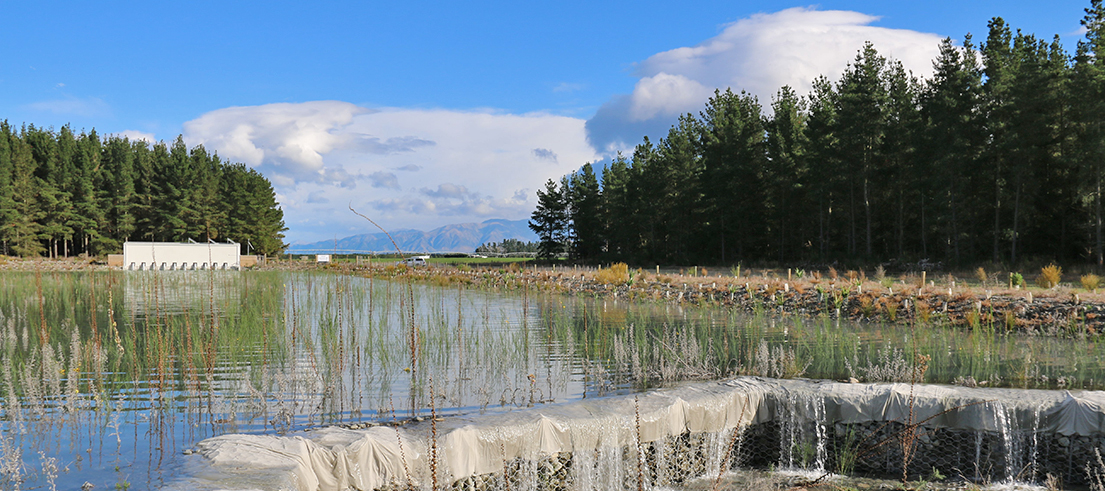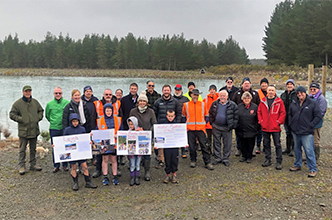
River ecosystem given a hand in dry times
With a hum and a roar, the valves opened and thousands of litres of clean Rakaia water start to bubble out of the valve house, flowing into a large basin surrounded by native seedlings.
The Waikirikiri/Selwyn Near River Recharge project is finally up and running, adding thousands of litres of Rakaia River water every second to the Waikirikiri/Selwyn River system.
Project partners from the Selwyn Waihora zone committee, Te Taumutu Rūnanga, Environment Canterbury, Selwyn District Council and Central Plains Water (CPW) visited the site in operation for the first time on Monday, celebrating a multi-agency effort to improve water quantity and ecosystem health in the Selwyn region.
They were joined by students from nearby Greendale School, who have ‘adopted’ the site and will continue to care for native seedlings and monitor lizard habitat and pest traps.
After a few dry months, the water the project brings to the Waikirikiri/Selwyn River system was badly needed, even if the site visit took place on a rare rainy day.
One river helping another in dry times

Greendale School students and project partners visit the river recharge site in operation.
As it runs across the loose leaky soils of the Canterbury Plains, the Waikirikiri/Selwyn River naturally loses flow to the ground and large stretches of the river typically run dry. Its name even acknowledges this fact — Waikirikiri translates approximately to "river of gravel".
When the river is running dry near the project site in Hororata and there is sufficient flow in the Rakaia River, water can be taken from the CPW pipeline and discharged in the leaky basin and dry river channel nearby, where it naturally seeps into the ground, mimicking the action of the river itself.
It repurposes water that is already consented to be taken for other use, so does not additionally affect flow in the Rakaia.
Supporting a habitat through the Plains
This water helps feed springs both nearby and in the lower reaches of the Irwell and Waikirikiri/Selwyn rivers, supporting some of the most important ecosystems for the endangered kōwaro (Canterbury mudfish).
Project manager Dr Brett Painter said that the site was purposely built on leaky ground where it will enter groundwater easily.
"We can discharge up to 3,500 litres per second at full capacity, and all of this water disappears within 1000 metres.
"We will see this water again in the springs of the Hororata river system, then in the Hororata River," he said. "It will go to ground again where the rivers meet, and then it will show up again in the lower catchment, feeding sites like Chamberlains and Coes Ford."
More information
Read more on the Waikirikiri/Selwyn Near River Recharge project and see the latest site updates.
